Viewing Planets Through Binoculars : Complete Guide
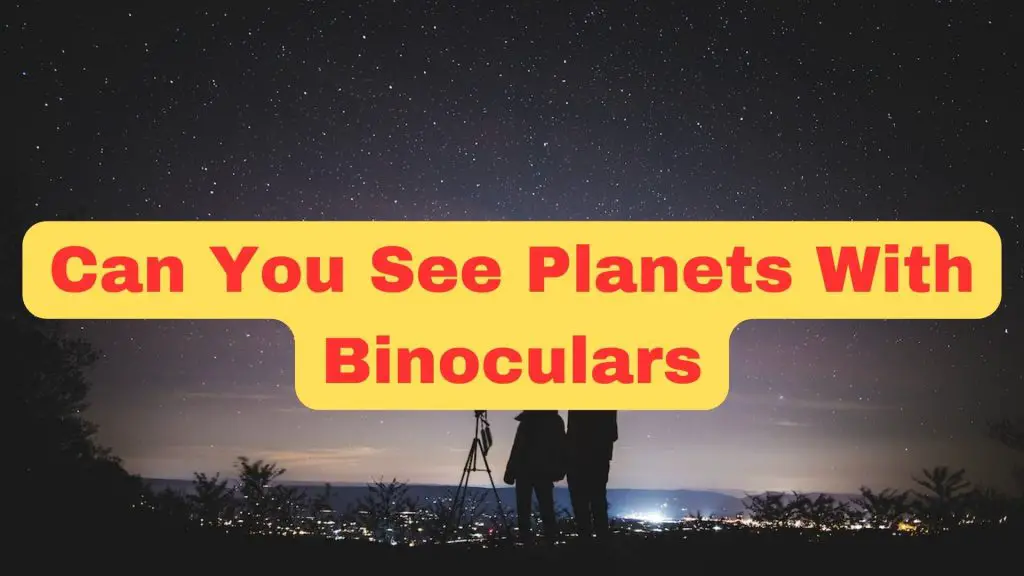
The night sky has always held a profound fascination for humanity, captivating our imaginations and inspiring a sense of wonder about the cosmos.
Among the countless celestial wonders that grace the heavens, the planets of our solar system stand out as celestial gems, beckoning stargazers to explore their mysteries.
While telescopes have long been synonymous with astronomical observation, a lesser-known yet equally rewarding tool for planetary exploration lies within the grasp of stargazers – binoculars.
Whether you’re an amateur astronomer or simply an enthusiast of the night sky, observing planets through binoculars offers a captivating and rewarding experience.
Here, We’ll explain everything you need to know, from understanding the basics of binoculars to observing the different planets in our solar system.
Let’s begin our journey by first knowing about binoculars’ specifications.
Understanding Binoculars and Their Specifications
To understand whether we can see planets through binoculars, it’s essential to grasp the key specifications that differentiate various binocular models and their applications in stargazing.
Explanation of Binocular Magnification and Aperture
Magnification:
Binocular magnification refers to the extent by which the image of an object appears larger than its actual size.
For instance, a 10x magnification means the object will appear ten times larger than it appears to the naked eye.
While high magnification might seem attractive for planetary observation, it can have drawbacks, such as reduced field of view, increased image shake, and decreased brightness.
Aperture:
The aperture of binoculars determines the amount of light they can gather. It is expressed as the diameter of the objective lens, usually in millimeters (e.g., 42mm).
A larger aperture allows more light to enter the binoculars, resulting in brighter and clearer images. This feature is particularly crucial for stargazing in low-light conditions.
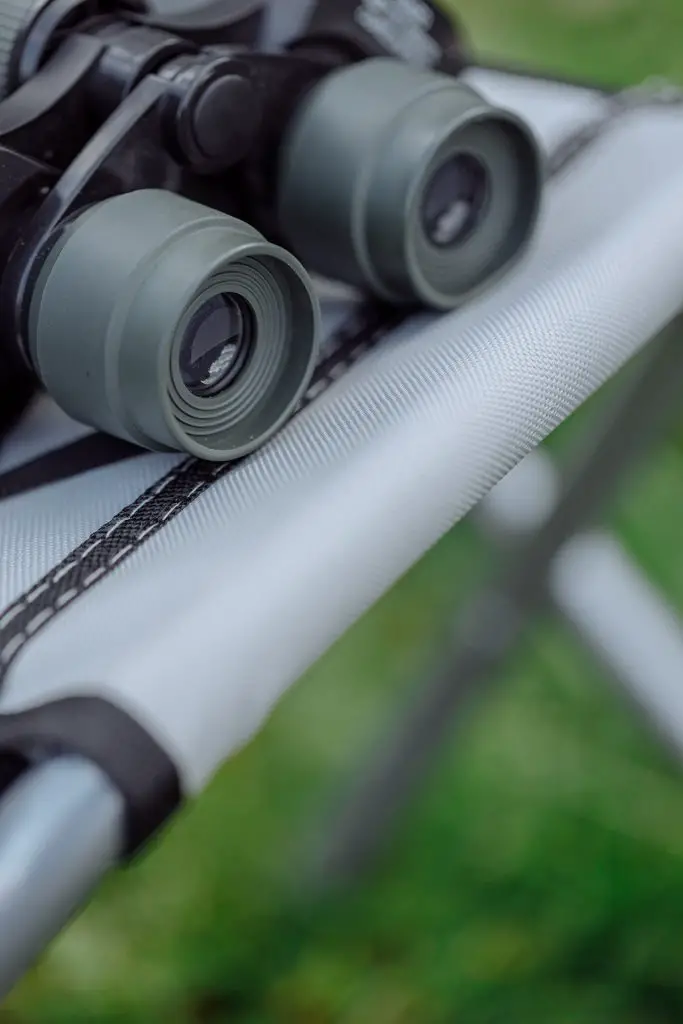
Different Types of Binoculars and Their Applications
Compact Binoculars:
Compact binoculars are lightweight, portable, and typically have lower magnification and smaller apertures.
They are suitable for casual stargazing and daytime use, but their limited light-gathering capabilities may not provide optimal views of planets.
Standard Binoculars:
Standard binoculars strike a balance between portability and performance.
With moderate magnification and aperture, they can offer decent planetary observations while remaining versatile for other activities like birdwatching and sports events.
Astronomy Binoculars:
Astronomy-specific binoculars are designed for stargazing.
They often have larger objective lenses (50mm or more) to gather ample light and deliver brighter images.
Lower magnifications (7x to 10x) are favored to maintain a wider field of view for locating and tracking celestial objects while higher magnifications like 15x ( like these 15×70) binoculars can help even detect inner moons of planets like Jupiter.
Also Read: How Far Can Binoculars See
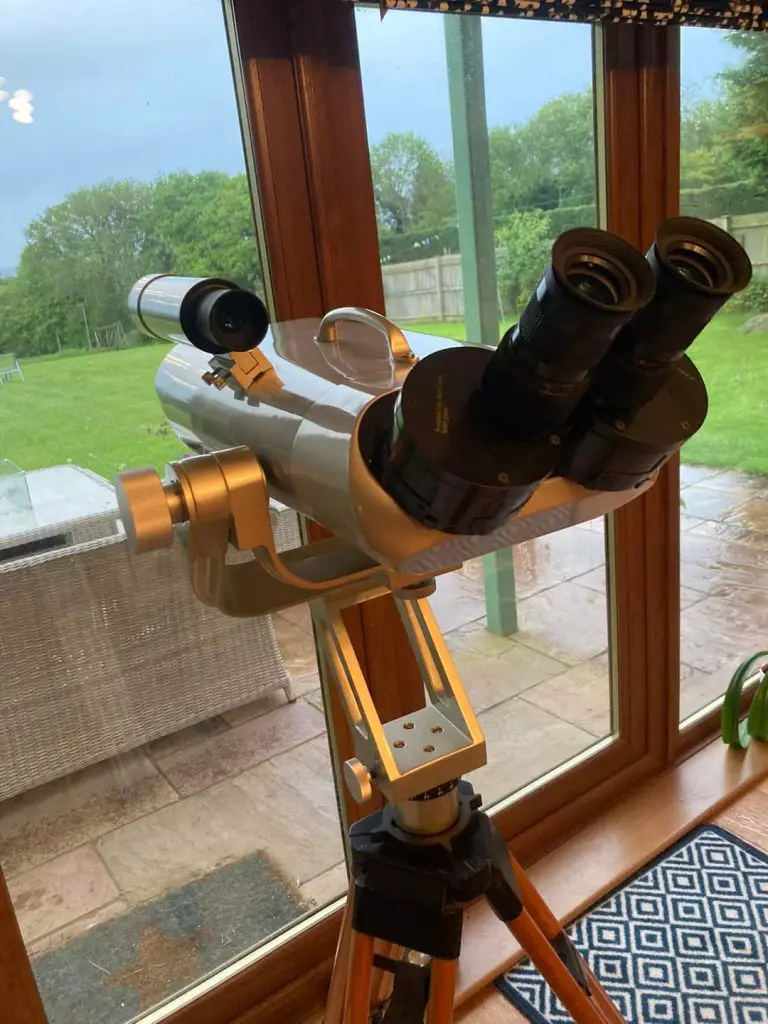
How to Choose the Right Binoculars for Stargazing
Selecting the right binoculars for stargazing can significantly impact your celestial viewing experience. Consider the following factors before making a purchase:
- Purpose: Determine whether your primary focus is stargazing or if you want binoculars for multi-purpose use. Astronomy binoculars offer the best planetary observation, while standard binoculars might suffice if you also plan to use them for other activities.
- Magnification and Aperture: For stargazing, opt for binoculars with moderate magnification (7x to 10x) to maintain a steady view and larger aperture (50mm or more) for better light-gathering capabilities.
- Exit Pupil: Calculate the exit pupil by dividing the aperture by the magnification (e.g., 50mm / 7x = 7.14mm). A larger exit pupil allows more light to reach your eyes, enhancing low-light performance.
- Field of View: A wider field of view facilitates locating and tracking planets and other celestial objects. Astronomy binoculars usually have a generous field of view.
- Image Stability: Higher magnifications may result in shakier images. Consider image stabilization technologies if you opt for binoculars with higher magnification.
- Quality and Coatings: Look for high-quality optics with anti-reflective coatings to improve image brightness and clarity.
- Weight and Comfort: Stargazing sessions can be lengthy, so choose binoculars that are comfortable to hold and not too heavy.
- Budget: Set a budget that aligns with your purpose. While premium binoculars offer exceptional performance, there are excellent mid-range options suitable for stargazing.
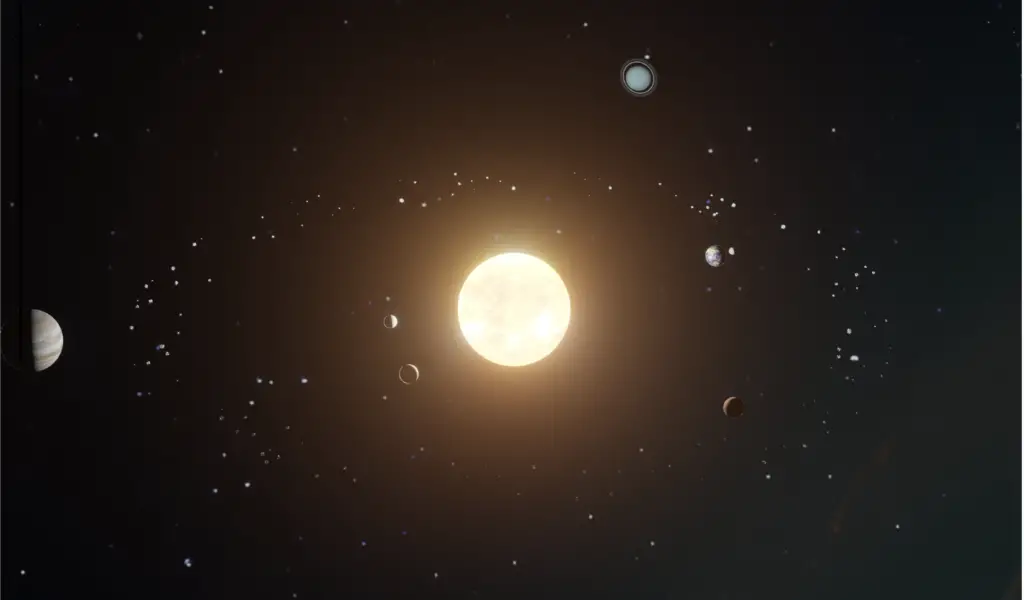
Planets’ Apparent Sizes and Distances from Earth
The apparent size of a planet in the night sky depends on its distance from Earth and can vary significantly.
When a planet is closer to Earth, it appears larger and more detailed in telescopic or binocular views. For example:
- During its closest approach to Earth, Mars can appear up to 25 arc-seconds in diameter, revealing surface features and polar ice caps through binoculars.
- Jupiter’s apparent size can range from around 30 to 50 arc-seconds, allowing for the observation of its cloud bands and Galilean moons.
Factors Affecting the Visibility of Planets Through Binoculars
While planets can be observed through binoculars, several factors influence their visibility and the quality of the observation:
- Planetary Positions: Planets go through phases similar to the Moon and exhibit different orientations relative to Earth. Observing a planet at its opposition (when it is directly opposite the Sun in the sky) usually offers the best views.
- Time and Location: The time of year and your geographic location impact a planet’s visibility. Some planets may be low on the horizon or hidden behind buildings or trees, affecting the quality of observation.
- Atmospheric Conditions: Turbulence, haze, and light pollution in the atmosphere can hinder clear observations, especially in urban areas.
- Binocular Quality: The optical quality of the binoculars, including the clarity of the lenses and coatings, affects the sharpness and brightness of the planetary image.
- Magnification: Extremely high magnification can make the image shaky and reduce the overall brightness, making it challenging to observe faint planets.
Planets Visible to the Naked Eye and Their Observation through Binoculars
Several planets in our solar system are visible to the naked eye and are easily spotted without the aid of binoculars.
These bright planets are known as “wandering stars” and have been observed by ancient civilizations for millennia. They include:
Mercury: Although challenging to spot due to its proximity to the Sun’s glare, Mercury can be seen in the early morning or evening sky.
Venus: As the brightest planet, Venus is unmistakable and visible both in the morning and evening skies.
Mars: Mars becomes prominent during its opposition, appearing as a bright reddish-orange object in the night sky.
Jupiter: One of the brightest objects in the night sky, Jupiter displays its four largest moons (Io, Europa, Ganymede, and Callisto) as points of light near the planet.
Saturn: With its dazzling ring system, Saturn is a mesmerizing sight in the night sky. While the rings may not be clearly visible through binoculars, the planet’s largest moon, Titan, can be observed.
Jupiter’s Moons: Binoculars can reveal the four Galilean moons of Jupiter, as well as occasional transits and shadow crossings.
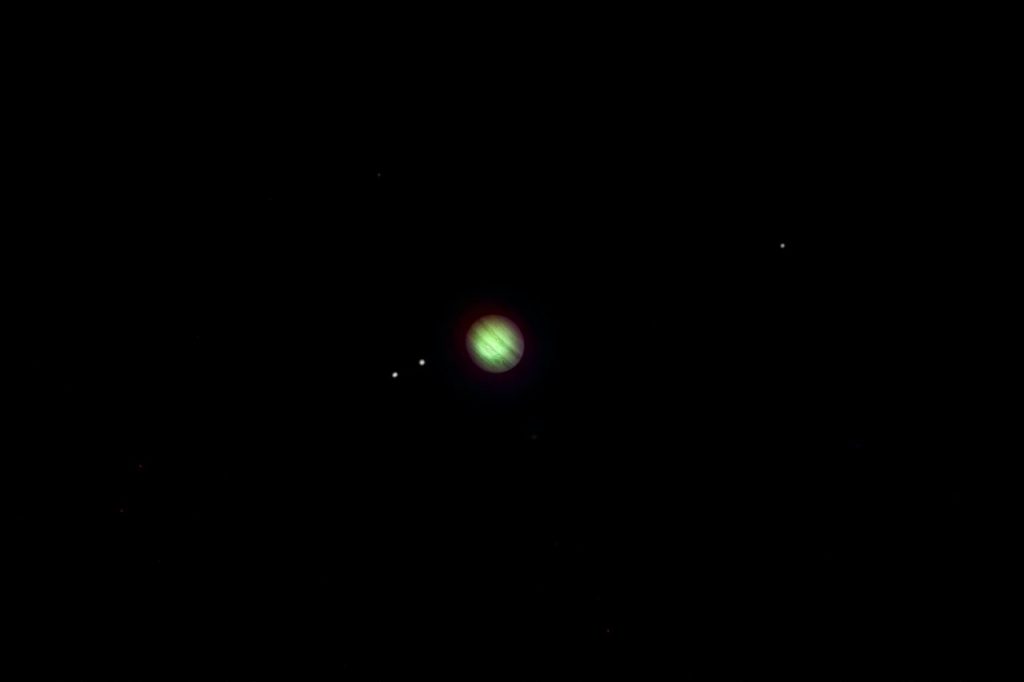
Details You Can Expect to See on Each Planet with Binoculars
While binoculars cannot rival the level of detail provided by telescopes, they do offer impressive views of some planetary features.
Here’s what you can expect to see on each planet with binoculars:
Mercury:
Viewing Mercury through binoculars can be quite challenging due to its proximity to the Sun and its small apparent size.
Mercury is often referred to as the “elusive” planet because it is usually seen very close to the horizon during twilight, making it difficult to spot.
When observed through binoculars, Mercury will appear as a tiny, bright dot of light, similar to a star. Its small size and proximity to the Sun mean that it lacks significant surface features visible through binoculars.
Additionally, Mercury’s position close to the Sun’s glare can make it harder to distinguish from the bright twilight sky.
To increase your chances of spotting Mercury through binoculars, it is best to look for it during its greatest elongation from the Sun, which occurs a few times a year.
During these periods, Mercury will appear farthest from the Sun and will be easier to observe in the evening or morning sky.
Venus:
Viewing Venus through binoculars can be a delightful experience, as it is one of the brightest and most prominent objects in the night sky.
Venus appears as a brilliant, dazzling point of light in the sky, similar to a star but much more luminous.
Through binoculars, Venus exhibits phases similar to the Moon, ranging from a thin crescent to a nearly full disk, depending on its position relative to Earth and the Sun.
These phases change over time as Venus orbits the Sun, and observing these phases through binoculars can be a fascinating sight.
The planet’s brightness and visibility make it an excellent target for observation, even with lower magnification binoculars.
Its distinct appearance and varying phases add to the allure of observing Venus through binoculars, providing stargazers with a chance to witness the celestial dance of our neighboring world.
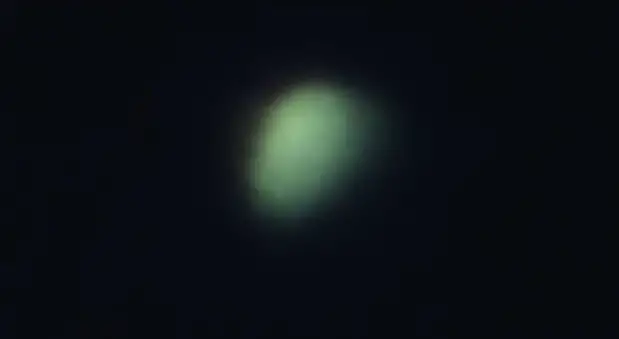
Mars:
Viewing Mars through binoculars can be a rewarding experience, especially during its opposition when it is closest to Earth and appears larger and brighter in the night sky.
Mars generally appears as a small, reddish-orange disc in binoculars.
Although it may not show as much detail as when observed through a telescope, some of its surface features may still be visible, especially during favorable oppositions.
Through binoculars, you might be able to see the distinct color of Mars, which sets it apart from stars and other celestial objects.
You may also observe some darker markings on its surface, which are areas of contrasting terrain. These markings can shift and change as Mars rotates, providing a dynamic view of the Red Planet.
For the best observations of Mars through binoculars, look for a clear and steady night sky and use binoculars with a moderate magnification (around 7x to 10x) and larger objective lenses (50mm or more) to gather more light.
Patience is essential, as atmospheric conditions can affect the clarity of the view.
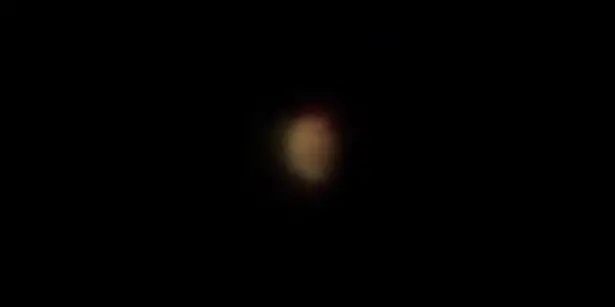
Jupiter:
Jupiter, the largest planet in our solar system, is easily visible to the naked eye and appears as a bright, steady point of light in the night sky.
When observed through binoculars, Jupiter’s splendor becomes even more apparent.
Through binoculars, Jupiter will appear as a small, round disk with a slightly flattened appearance due to its rapid rotation.
You may also be able to distinguish some of its prominent cloud bands, which are horizontal stripes of different colors and shades.
The most well-known cloud band is the equatorial band, typically seen as a dark belt across Jupiter’s equator. Above and below this band, you might also notice lighter-colored bands.
One of the most fascinating features of Jupiter visible through binoculars is its four largest moons, known as the Galilean moons: Io, Europa, Ganymede, and Callisto.
These moons are usually visible as tiny points of light surrounding Jupiter. Over a few nights, you can observe their positions changing as they orbit the planet.
To optimize your Jupiter observation with binoculars, use higher magnification binoculars (around 10×50 or more) and look for a clear and steady night sky.
Jupiter’s bright appearance makes it an ideal target for binocular viewing, providing a glimpse into the grandeur of our gas giant neighbor and its captivating moon system.

Saturn:
Saturn, with its stunning ring system, is a celestial wonder that captivates stargazers of all ages.
Through binoculars, Saturn appears as a small, golden-hued disc with a distinct oval shape. The most striking feature is, of course, its glorious ring system, which encircles the planet.
The rings are usually visible as two thin, bright lines on either side of Saturn’s disk, creating a mesmerizing and awe-inspiring sight.
Binoculars with higher magnification (around 10×50 or more) can enhance your view of Saturn and reveal more detail in its ring system.
Depending on the orientation of Saturn’s rings, you may see them appearing wider or narrower at different times during its 29.5-year orbit around the Sun.
Additionally, Saturn’s largest moon, Titan, is usually visible as a tiny dot of light near the planet. Titan is the second-largest moon in our solar system and adds to the wonder of observing Saturn through binoculars.
To optimize your Saturn observation, choose a clear, dark-sky location, and use binoculars with good light-gathering capabilities.
Patience is key, as waiting for moments of steady atmospheric conditions can significantly improve the clarity of your view.
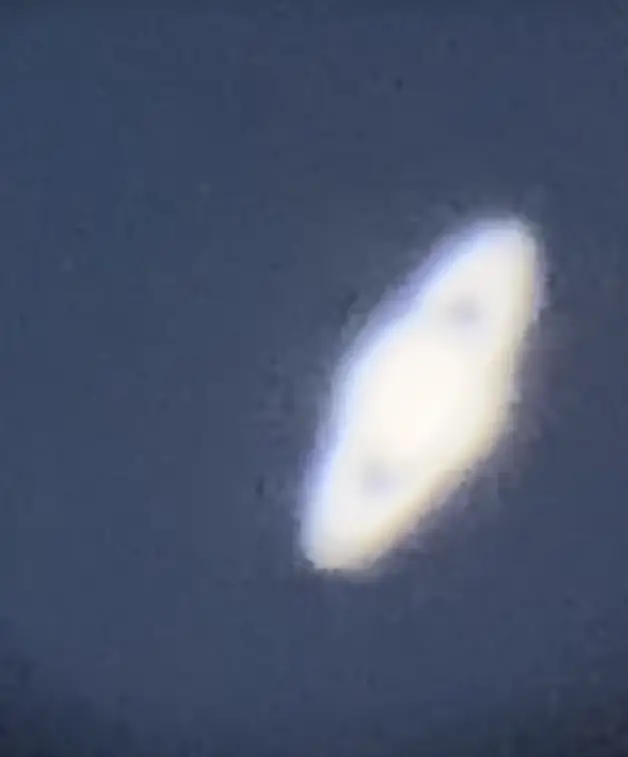
Uranus:
Viewing Uranus through binoculars can be a challenging endeavor due to its distant location and small apparent size.
Uranus appears as a tiny, pale blue-green disc in binoculars, often resembling a faint star-like point of light.
Without high magnification, it won’t show much detail, and it might be challenging to distinguish it from nearby stars.
For better observations of Uranus, it is recommended to use higher magnification binoculars (12×50 or above) and observe from dark, light-pollution-free skies.
However, even with better equipment, Uranus will still appear as a small and distant disc, unlike the more prominent planets like Jupiter or Saturn.
For a more detailed view of Uranus and its faint bluish-green color, telescopes with higher magnification are preferred.

An Interesting Video: Seeing Planets With Binoculars
Tips and Techniques for Planet Observation with Binoculars
In this section, we will explore essential tips and techniques for successful planet observation with binoculars, covering the aspects of preparation, locating planets in the night sky, and optimizing your binocular setup.
Preparing for Stargazing: Location, Time, and Equipment Setup
- Choose a Dark Sky Location: Light pollution can significantly impact your ability to observe celestial objects. Select a location away from city lights, preferably in a dark sky reserve or an open area with an unobstructed view of the horizon.
- Check the Weather Forecast: Before heading out, make sure to check the weather forecast for the evening. Clear skies are essential for successful stargazing.
- Use Red Flashlights: Red flashlights or headlamps preserve your night vision while allowing you to read star charts and adjust your binoculars without disrupting the darkness.
- Bring Comfortable Seating: Stargazing can be a lengthy activity, so consider bringing a comfortable chair or blanket to sit or lie on while observing.
- Binocular Tripod or Mount: For extended observations or high-magnification binoculars, using a tripod or binocular mount can significantly stabilize your view and reduce image shake.
Using Star Charts and Apps to Locate Planets in the Night Sky
- Download Astronomy Apps: There are numerous astronomy apps available for smartphones that can help you identify planets and other celestial objects. Some popular apps include SkySafari, Stellarium Mobile, and Star Walk.
- Familiarize Yourself with the Night Sky: Learn to recognize prominent constellations and their positions relative to each other. Planets often appear near bright stars, making it easier to locate them.
- Use Planetarium Software: Planetarium software like Stellarium (available for desktop and mobile) allows you to simulate the night sky for any location and time, helping you plan your stargazing sessions.
- Print Star Charts: If you prefer a tangible reference, print star charts or download printable sky maps to take with you during your stargazing outings.
Best Practices for Focusing and Stabilizing Binoculars During Observation
- Adjust the Diopter: Many binoculars have a diopter adjustment to fine-tune the focus for each eye. Start by focusing one eye using the central focus wheel, then adjust the diopter ring for the other eye to match.
- Steady Your Hands: Keep your arms close to your body and lean against a stable surface like a wall or tree to minimize hand tremors.
- Practice Patience: Observing planets through binoculars might require a bit of patience, especially if atmospheric conditions are less than ideal. Wait for moments of steady seeing to get clearer views.
- Use Binocular Straps: Invest in binocular straps or harnesses to distribute the weight of the binoculars and keep them steady during extended observations.
- Practice Frequent Refocusing: Binoculars can lose focus due to temperature changes or accidental adjustments. Regularly refocus your binoculars during your observation session.
Also Read: How To Photograph the Moon
Advanced Planet Observation with Binoculars
Planet observation through binoculars can be a captivating experience even for beginners, but for seasoned stargazers and enthusiasts, there are several advanced techniques and accessories that can take your celestial exploration to the next level.
In this section, we will delve into the world of advanced planet observation with binoculars, covering various accessories that enhance planetary observation.
We will also see the benefits of combining binoculars with tripods and mounts for improved stability, and the exciting technique of digiscoping, which allows you to capture stunning planetary images using a smartphone.
Accessories that Enhance Planetary Observation
Barlow Lenses:
Barlow lenses are optical accessories that increase the effective magnification of your binoculars.
They insert between the binocular eyepiece and objective lens, effectively doubling or tripling the magnification. This accessory is especially useful when you want to get closer views of planets and their surface details.
Colored Filters:
Colored filters can enhance the visibility of specific planetary features by increasing contrast.
For example, a red filter can help bring out details on the surface of Mars, while a blue filter can reveal cloud bands on Jupiter.
Eyepiece Filters:
Similar to colored filters, eyepiece filters can be used to improve contrast and reduce glare during planetary observation.
Moon filters, for instance, help reduce the Moon’s brightness and make it more comfortable to observe.
Combining Binoculars with Tripods and Mounts for Improved Stability
Tripods for Binoculars:
High-magnification binoculars can be challenging to hold steady for extended periods. Using a tripod specifically designed for binoculars provides much-needed stability, allowing you to enjoy long-duration observations without shaky views.
Binocular Mounts:
Binocular mounts are specialized mounts that attach to tripods and provide stable support for your binoculars. Some mounts also offer smooth panning and tilting, enabling you to track moving planets effectively.
Image-Stabilized Binoculars:
Consider investing in image-stabilized binoculars that use built-in gyroscopes to compensate for hand movements. These binoculars help minimize image shake and provide a more comfortable and steady viewing experience.
Digiscoping: Capturing Planetary Images with Binoculars and a Smartphone
Digiscoping Adapters:
Digiscoping adapters allow you to attach your smartphone to the eyepiece of your binoculars, effectively turning them into a telephoto lens for your phone’s camera.
Capturing Planet Images:
To capture planetary images, stabilize your binoculars on a tripod or mount, and align your smartphone’s camera with the eyepiece using the digiscoping adapter. Use timer functions or remote shutter releases to reduce vibrations and capture sharp images.
Image Processing:
After capturing planetary images, use photo-editing apps or software to enhance the contrast and details of your images. This step allows you to bring out the finer features of planets and create stunning planetary portraits.
Limitations of Observing Planets Through Binoculars
While binoculars are excellent tools for observing celestial objects, including planets, they do have their limitations.
Understanding these limitations is essential for stargazers to set realistic expectations and know when to consider using a telescope for more detailed views.
In this section, we will explore the boundaries of binoculars for planetary observation, discuss when to transition to a telescope, and highlight other celestial objects and phenomena better suited for binocular observation.
Understanding the Boundaries of Binoculars for Planetary Observation
Limited Magnification:
Binoculars typically offer magnification in the range of 7x to 20x. While this is sufficient for observing the Moon and some larger planets like Jupiter and Saturn, it may not provide enough detail for smaller planets like Mars and distant planets like Uranus and Neptune.
Smaller Aperture:
Compared to telescopes, binoculars have smaller objective lenses (typically around 50mm or less). The smaller aperture limits their light-gathering capabilities, which can impact the brightness and clarity of planetary views, especially in dim or light-polluted areas.
No Tracking Mechanism:
Binoculars lack the tracking mechanism found in telescopes, making it challenging to follow planets as they move across the sky. This can be particularly problematic for observing planets at higher magnifications.
Limited Stability:
Higher magnifications in binoculars can result in shaky images due to hand tremors, making it difficult to maintain a steady view of planets.
When to Consider Using a Telescope for More Detailed Views
Observing Mars and Other Small Planets:
While binoculars can reveal Mars’ distinctive red color and some surface features during its opposition, telescopes with larger apertures will provide more detailed views of Martian features such as polar ice caps and dark markings.
Jupiter and Saturn’s Moons and Features:
Telescopes allow for higher magnifications, enabling you to observe Jupiter’s cloud bands, the Great Red Spot, and its four Galilean moons in more detail. Additionally, telescopes provide better views of Saturn’s ring system and its moons.
Uranus and Neptune:
These distant planets are challenging to observe with binoculars due to their small apparent sizes. Telescopes with higher magnifications are necessary to discern their blue-green disks.
Planetary Transits and Occultations:
Telescopes are essential for observing rare events like planetary transits (e.g., Venus crossing in front of the Sun) and occultations (e.g., the Moon covering a planet or star).
Other Celestial Objects and Phenomena Better Suited for Binocular Observation
The Moon: Binoculars provide a stunning view of the Moon’s craters, mountains, and maria. The larger field of view of binoculars allows you to appreciate the Moon’s overall features.
Star Clusters: Binoculars are ideal for observing star clusters like the Pleiades (Seven Sisters) and the Beehive Cluster (M44). Their wider field of view enhances the beauty of these star-studded regions.
Nebulae: Brighter nebulae, such as the Orion Nebula (M42), can be observed with binoculars. While telescopes reveal more details, binoculars showcase the nebula’s larger size and the surrounding star field.
Comets: Bright comets can be magnificent sights through binoculars, revealing a fuzzy coma and possibly a tail, offering a unique observing experience.
FAQ’s: Common Queries Related to Observing Planets with Binoculars
- Q: Can I see planets through binoculars?
- A: Yes, you can observe several planets in our solar system through binoculars. Planets like Venus, Mars, Jupiter, and Saturn are bright enough to be easily seen with binoculars.
- Q: Which planets are best observed through binoculars?
- A: Venus, Mars, Jupiter, and Saturn are excellent targets for binocular observation. Venus displays phases similar to the Moon, while Mars can reveal surface features during its opposition. Jupiter’s cloud bands and four Galilean moons are visible, and Saturn’s ring system is a fascinating sight.
- Q: Can I use any binoculars for observing planets?
- A: While you can use most binoculars for planetary observation, astronomy-specific binoculars with larger apertures (50mm or more) are more suitable, as they gather more light and offer brighter views.
- Q: What magnification is best for observing planets?
- A: Binoculars with moderate magnification (around 7x to 10x) are preferred for observing planets. Higher magnifications may result in shaky images and reduced brightness.
- Q: Can I observe Mercury and Uranus through binoculars?
- A: Observing Mercury can be challenging due to its proximity to the Sun’s glare, but it’s possible during dawn or dusk. Uranus is visible to the naked eye, but binoculars can reveal it as a small blue-green disc in dark skies.
Some Other Answers and Explanations to Address Popular Concerns
- Q: Can I see the rings of Saturn through binoculars?
- A: While binoculars may not clearly show Saturn’s rings, they can reveal its disk and its largest moon, Titan. Telescopes are better suited for observing the intricate details of Saturn’s ring system.
- Q: Can I observe planets during the daytime?
- A: Observing planets during the daytime is challenging due to the Sun’s brightness, which can wash out the sky. Planetary observation is best done during the twilight hours or after sunset.
- Q: Is it safe to observe the Sun through binoculars?
- A: Observing the Sun directly through binoculars without proper solar filters is extremely dangerous and can cause permanent eye damage. Use solar filters or solar projection techniques for safe solar viewing.
- Q: Are there specific binoculars for astronomy?
- A: Yes, astronomy binoculars are designed for stargazing and often have larger objective lenses for better light gathering. They are also optimized for a wider field of view, making it easier to locate celestial objects.
- Q: Can I use binoculars for astrophotography?
- A: While binoculars are not primarily designed for astrophotography, you can use them for “digiscoping” to capture images of the Moon and bright planets by attaching a smartphone to the eyepiece.
Interesting Read:
Can You Watch ISS Through Binoculars
Binocular Photography: How To Take Great Pictures Through Binoculars
Encouragement for Readers to Explore the Wonders of the Night Sky with Binoculars
As we conclude this article, we encourage readers of all ages and experience levels to venture into the night sky with a pair of binoculars and a sense of wonder.
Stargazing is a humbling and awe-inspiring activity that allows us to connect with the universe’s vastness and its celestial marvels.
Binoculars offer a simple and accessible gateway to this captivating world.
They are portable, easy to use, and suitable for everyone, whether you’re a seasoned astronomer or a curious beginner.
With a bit of preparation, patience, and a willingness to explore, the night sky becomes a canvas of celestial wonders just waiting to be observed.
Final Thoughts on Planetary Observation with Binoculars
The beauty of observing planets with binoculars lies not only in the views they offer but also in the sense of discovery and amazement they inspire.
Through their lenses, we can witness the changing phases of Venus, the intriguing markings on Mars, the regal rings of Saturn, and the dance of Jupiter’s moons—all from the comfort of our own backyards.
Moreover, planetary observation with binoculars opens up a world of possibilities for budding astronomers, young and old. It fosters curiosity, ignites a passion for science, and instills a sense of wonder about our place in the cosmos.
So, grab a pair of binoculars, venture outdoors on a clear night, and embrace the adventure that awaits you.
Observe the planets, gaze at the Moon, and explore the constellations. Remember to stay safe by following proper solar viewing techniques and protecting your eyes during solar events.
